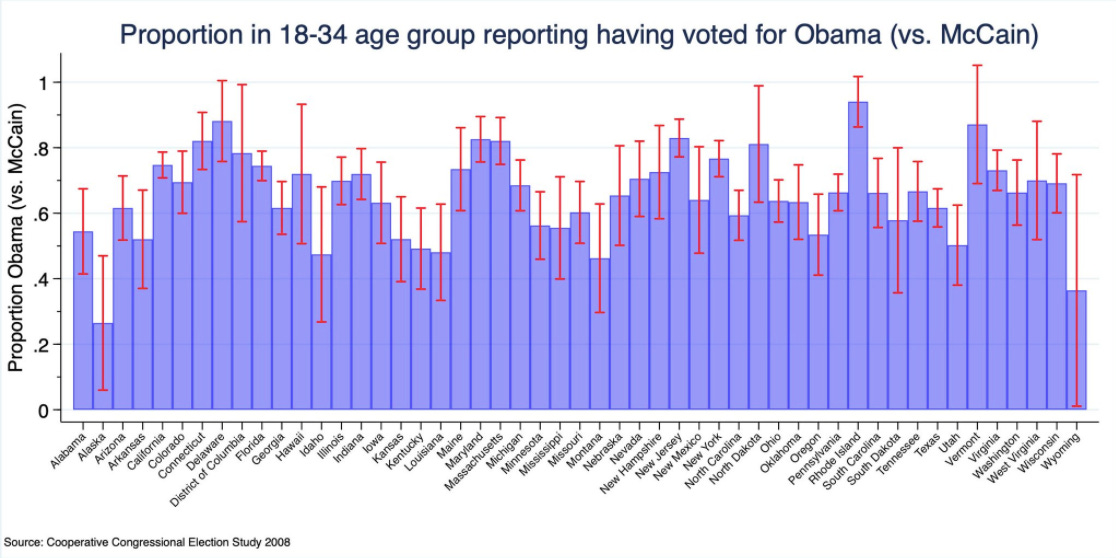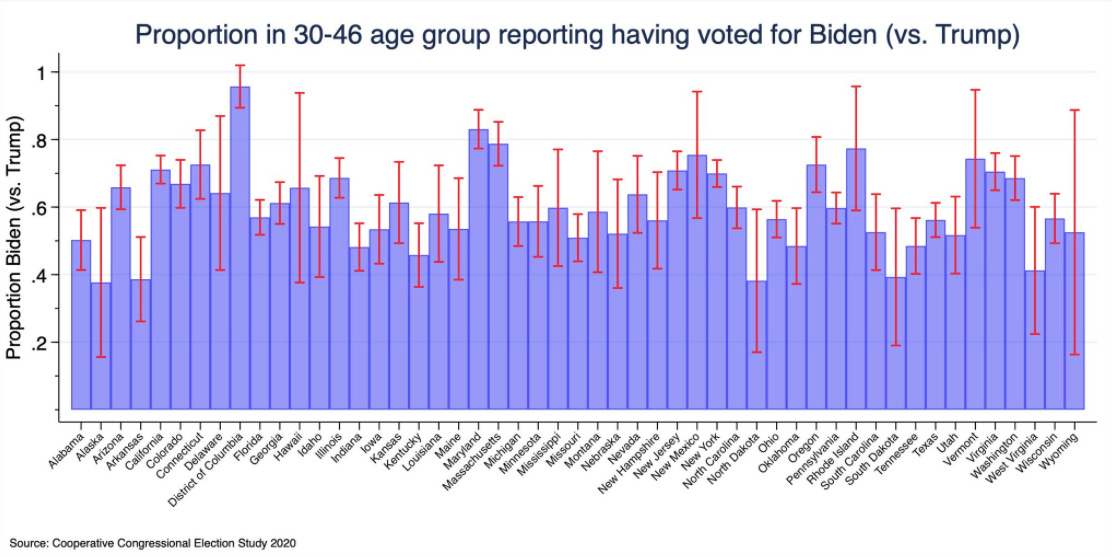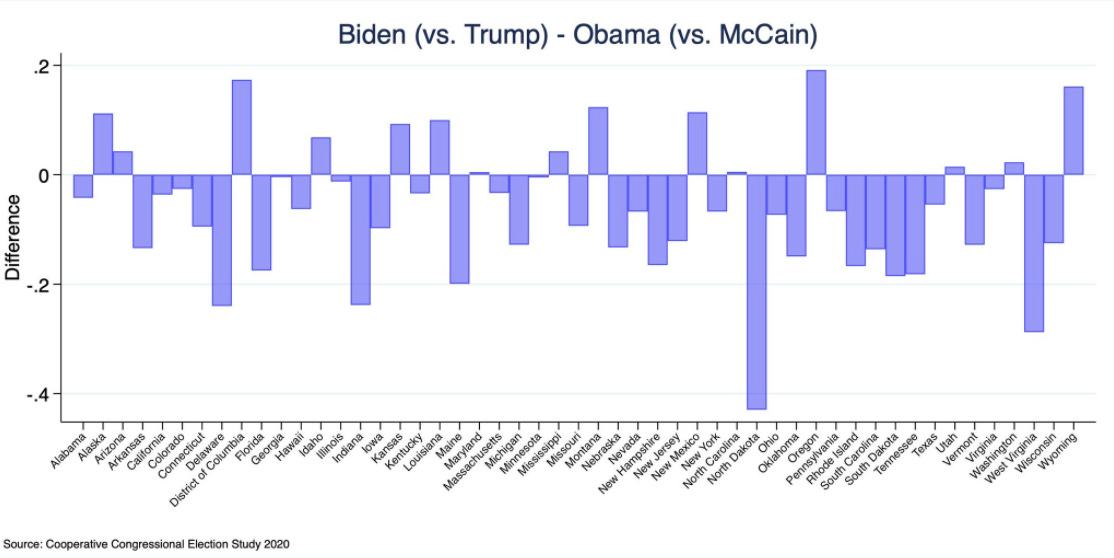As a geriatric millennial, I remember hearing that my generation was going to launch a permanent majority for the Democratic Party and usher in more politicians like Barack Obama in the future.
Now in my mid-30’s, I’ve seen a lot of my peers who backed “Hope and Change” in 2008 gear up with red MAGA hats this last election cycle. Curious to see if this is just isolated to my own personal experience, I wanted to present a deep dive on millennials - the generation that boomers love to hate.
So for this deep dive, we’re going to examine four data points - exit polls in 2008 and 2020 as well as CCES studies from both years and see how this gigantic voting bloc has changed over time.
Background:
The millennial vote was crucial in Obama’s 2008 landslide victory, almost single-handedly flipping states like North Carolina and Indiana. According to CNN Exit polls, 66 percent of voters under 30 cast their ballots for Obama/Biden.
This created the fantasy in the eyes of progressives that millennials would usher in a permanent progressive future, while conservatives launched a million memes about the group of young people who were spending their future on avocado toast and living in their mom’s basement.
Obama beat McCain by 9.2 million votes or 9.55 percent, while Biden bested Trump by 7.05 million votes or 4.4 percent. Here’s how millennials moved during the 12 year period.
CCES:
One data point that showed how millennials swung is the Cooperative Congressional Election Study in 2008 and 2020.
According to the study, Obama won a majority of millennial votes in every state but four (Alaska, Louisiana, Montana, and Wyoming).
That same population of voters, now between 30 and 46 years old, had a starkly different result. Biden still won a majority in most states, but it wasn’t nearly as high. While McCain only won a majority of this population in four states, Trump won the majority in ten states (Alaska, Arkansas, Indiana, Kentucky, Missouri, North Dakota, Oklahoma, South Dakota, Tennessee, and West Virginia.)
Overall nationwide, Trump improved among these voters in 38 states, while Biden built on Obama’s numbers in 12 states and the District of Columbia. States like North Dakota, West Virginia, Indiana, Maine, and Delaware saw the largest decline in their support for the Democrat nominee.
Here’s a map of how millennial voting habits changed according to the CCES studies:
Exit Polls
CCES data is good, but it can often be accused of having sample sizes that are too small in some states. So the second data point I want to look at is exit polls, which are universally hated by politicos and data analysts but loved by the media.
I’m going to compare the CNN exit polls in 2008 with the Fox News exit polls in 2020, which I believe are more accurate than CNN’s that year. Here’s a sample of some key states that voted either overwhelmingly Republican, Democrat, or were consider tossup states.
This data point shows a much larger swing towards the GOP than the CCES, which averaged about 10 points in favor of Republicans. By comparing exit polls, swings are closer to 20 points or more toward Republicans. While Trump only won 3 of these states’ 30-44-year-old vote compared to McCain’s one state, most were in the single digits.
Fox News exit polls showed Biden won voters between the ages of 30-44 by 12 points, much smaller than Obama’s 34 point landslide.
Here’s a comparison of how these two groups moved during these two elections.
Conclusion:
While the data is imperfect, everything we have suggests millennials that were 18-29 during the 2008 election shifted between 10-20 points towards the GOP since casting their vote overwhelmingly for Obama.
It’s clearly different state by state, with Rust Belt and traditionally Republican states moving the furthest right.
Part of the reason is that some people do become more conservative as they get older, but for others it seems that center-right voters are less politically motivated when they’re young. It could be that the agnostic voters of today are the Republican voters of tomorrow.
Anthony Leonardi and Zach Goldberg assisted with this substack








